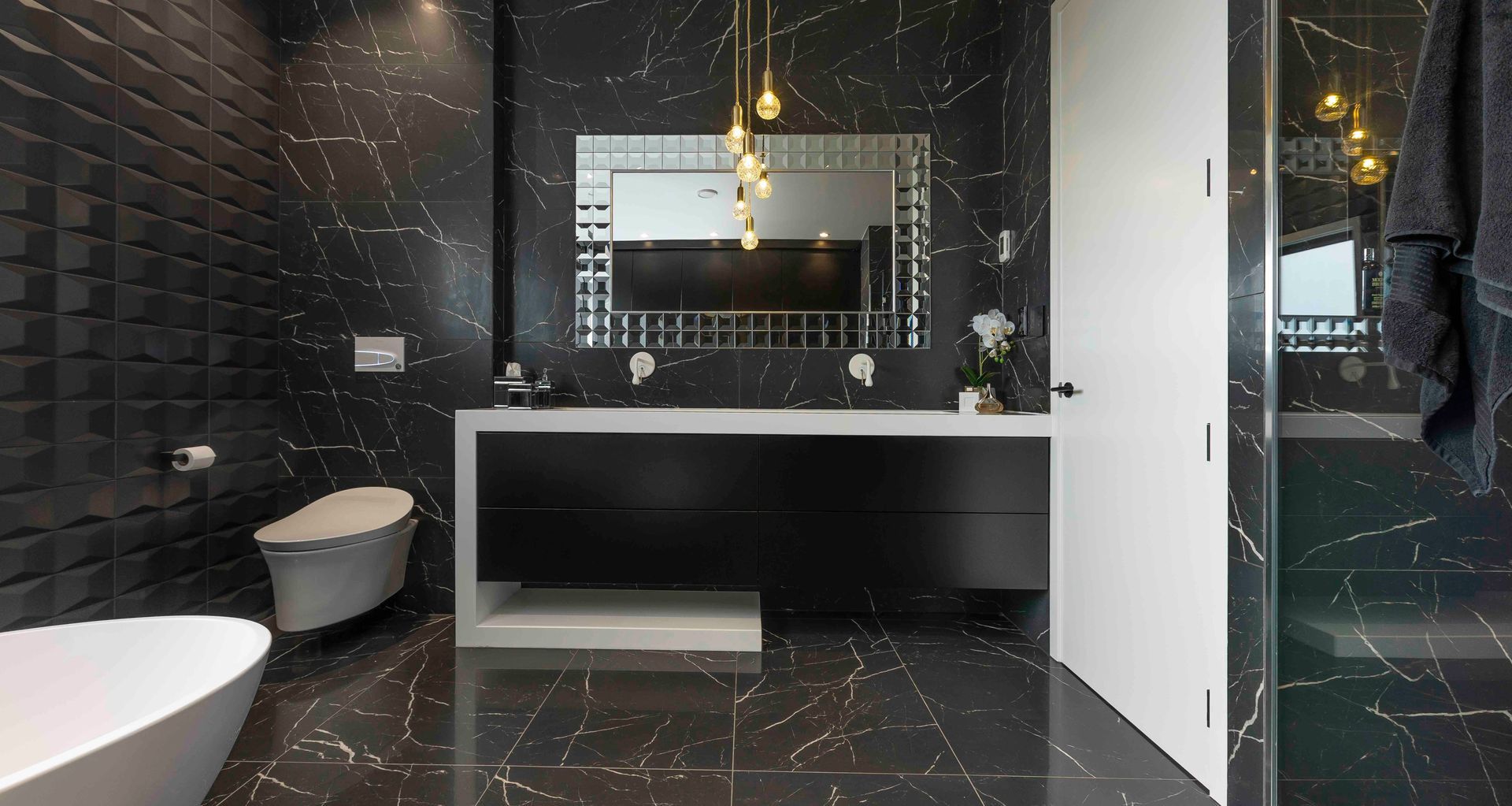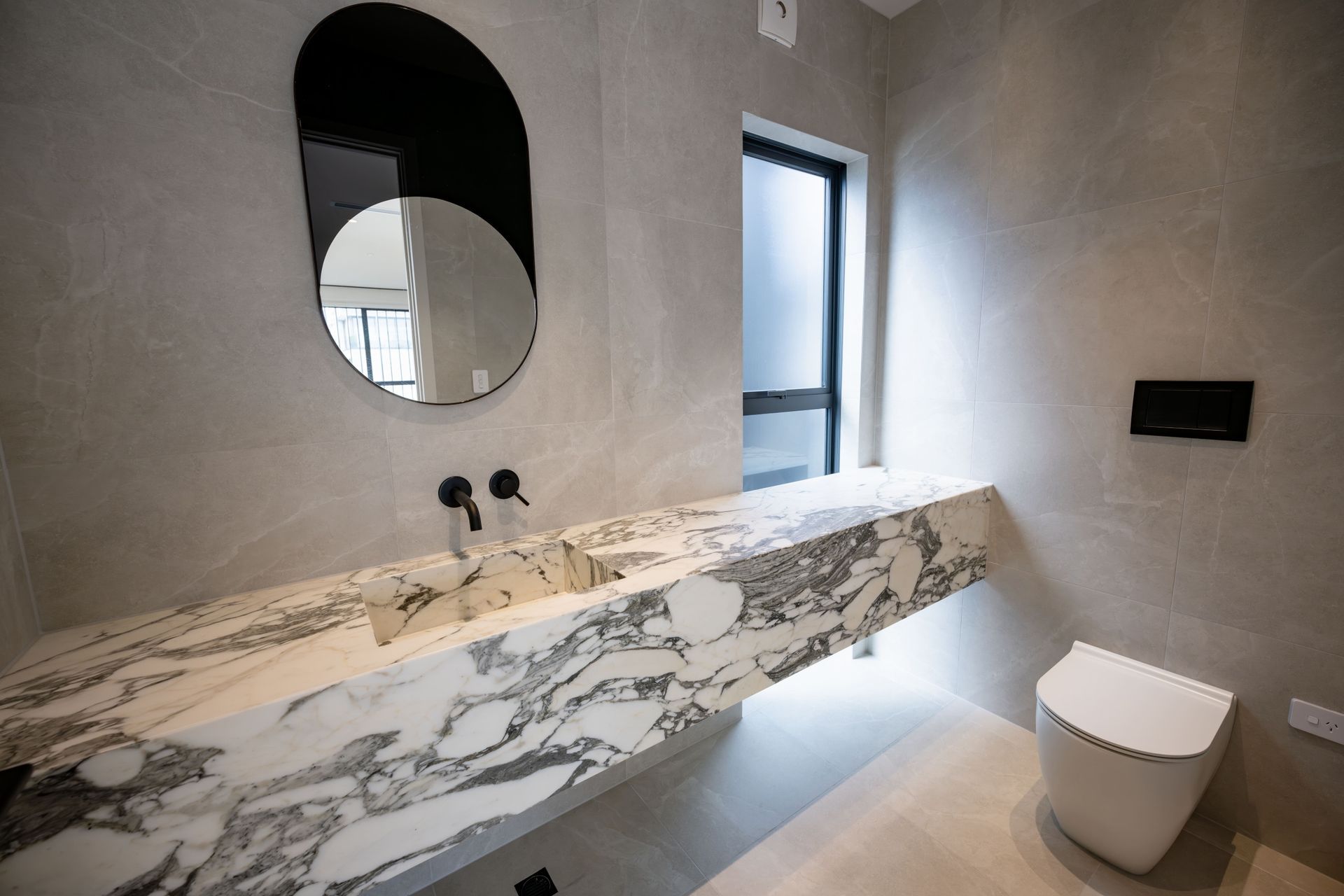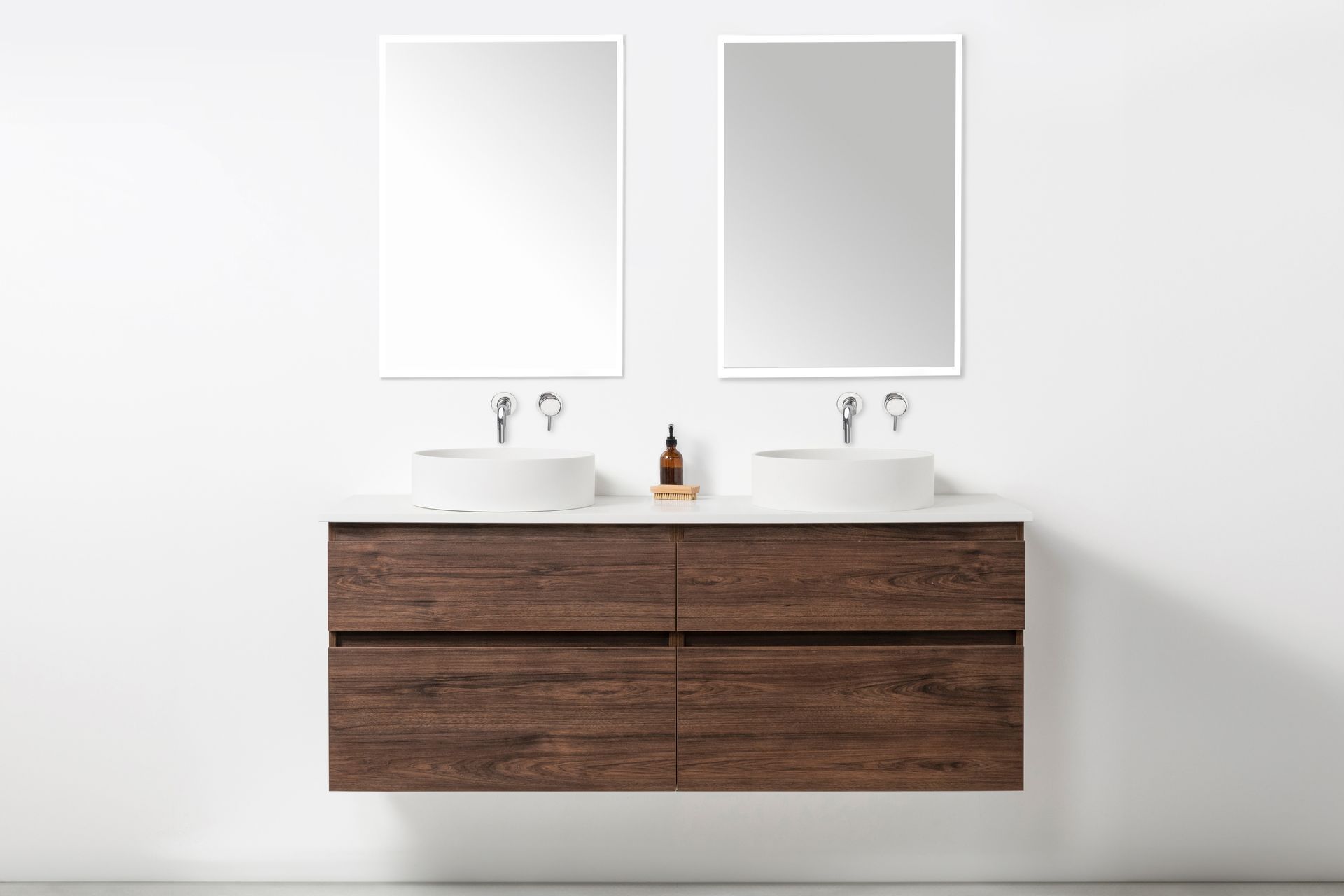The best bathroom vanity materials to consider for a new bathroom space

People cherish their bathrooms as a space that gets them going in the morning and the space where they can unwind in the evening. Much of that time is spent in front of the bathroom vanity, highlighting its significance as a functional feature. In most bathroom designs, it tends to be a focal point for the eye too which makes its aesthetic equally important. By choosing the right bathroom vanity material, you will ensure your vanity does everything you need it to and more.
1. Vitreous china — the classic choice
In use since the 1950s, this material has stood the test of time and is sure to serve you well into the future. As a ceramic benchtop coated with glaze, it is strong yet lightweight, easy on the eye — and the wallet. Due to its popularity, there is a range of styles available making it easy to find one you like.
2. Melamine — an easy solution for premium styling
Melamine is a thin laminate applied to the surface of almost anything you like. It is a simple way to get some of those harder-to-achieve looks such as marble, and it stands up to daily wear and tear well. You can’t be too rough with it though, as any chips in the resin will allow water to penetrate it which could compromise the look or even the functionality of your vanity.

3. Solid wood — warm and welcoming
The rustic charm of solid wood should not be overlooked. It is warm and inviting and can be recycled, adding eco-friendliness to its appeal. If you choose this route, be sure to protect it well from water damage by coating it with epoxy.
Related article: Beautiful bathroom vanity ideas for a fresh start
4. Plywood — versatility personified
Plywood is easy to source, strong yet flexible, and resists water well. Made of thin boards glued together with the grain at right angles, it can be eco-friendly and is incredibly versatile. With a quality laminate or sealant, it can look great in modern and utilitarian-style bathrooms that have a spartan feel. Used wisely, it can be a stunning feature.

5. Wrought iron — the ultimate statement
A wrought iron vanity makes a strong statement. While the metal does need some care to avoid rust, its style will never fade. It’s heavy but has a distinctive character all of its own and can accessorise and provide some unique style to a bathroom vanity.
6. Marble and granite — pure luxury
The timelessness of natural stone provides a sense of permanence, security and peace of mind. Granite is a hard-wearing material and an eye-catching accent, while marble is a bit softer and takes time to settle in. Daily use will give marble its own unique feel. It has long been a shorthand for 'luxury' for a reason, so if you're aiming for the top, give this one some serious consideration. Because of its weight, it is expensive to ship and can be difficult to manoeuvre into place.

7. Steel, chrome and brass — fine functioning finishes
You may wish to pursue a minimalist look. If this is the case, be sure to cast your eye over a metal washstand. With a variety of metals and finishes available, these classy choices can fit into any uncluttered room with just the right amount of character. There are many styles to choose from so contemporary or antique bathrooms can be adorned with metal finishes that fit in perfectly.
Related article: How to pick bathroom vanity lights — our top tips
8. Solid surface resins — seamless benefits
A solid surface vanity provides a seamless look, with no joins or weak points. The material is a man-made resin material that is non-porous so water will never damage it and is one of the easiest surfaces to clean. The resin is mixed with marble dust for a luxury look that is super low maintenance.

9. Concrete — bold and durable
Hard-wearing, endless variations of colours and shapes and a super-modern look make concrete an option for contemporary homes. Whether you buy a pre-made vanity top or have one made for you by a bathroom supplier, concrete can be a creative and durable solution. With regular sealing and maintenance, concrete vanities look good for many years.
10. Tiles — endless possibilities
Ceramic, glass and porcelain tiles provide endless options. There’s a full range of colours, styles, sizes, shapes and patterns so you can choose any look you want — from bright and modern to classic and elegant or anything in between. A tiled vanity also offers the advantage of continuity as a splashback or bath and shower surround for a truly cohesive look. Affordable and adaptable, if the grout is kept clean, a tile vanity is a great way to personalise your bathroom.
Related article: 11 stunning bathtub surround ideas for Kiwi homes

How to select the right bathroom vanity material
Now that you've seen the best bathroom vanity materials available, you should hopefully have a better idea of what might work out best for you. However, if you're still not quite completely sure, following these steps should help you hone in on the right choice for you.
1. Evaluate your bathroom environment
It's important to consider the bathroom space and environment when thinking about your bathroom vanity cabinets. This includes everything from the size of the space you're working with to how well-ventilated it is and the amount of sun exposure there'll be. If you have a small bathroom that tends to get quite humid, then water-resistant materials become especially important. If your bathroom vanity will be positioned in direct exposure to the sun, you'll want materials that don't discolour easily.
2. Plan around your budget
Whenever you make a purchase, cost is a factor that comes into the equation and the choice of material has a big influence on what you'll have to pay. For those looking for a budget-friendly option, materials like MDF or acrylic resin make attractive choices. For a little bit more money, you can start considering plywood vanities that have laminate or quality sealants. If you're in a position to invest a significant amount, materials like solid wood, engineered stone or natural stone will be tempting for that undeniable look of luxury.
3. Think about the long-term implications
Your bathroom cabinets and vanity are permanent fixtures and should be viewed as a long-term investment. This is important as it may change your thinking concerning the budget you set, investing a bit more to ensure you get something that will go the distance. You also need to think about how much use your vanity will get. For example, if it's for the main bathroom in a busy family household it's going to be used much more than one in an ensuite or apartment, so getting something durable will probably need to be a priority. Some materials may also require a bit more upkeep than others when it comes to cleaning and/or sealing, so it helps to be aware of this so you know how much effort will be required.
4. Factor in installation considerations
In most cases, a bathroom vanity unit will need to be installed by a bathroom professional which means there'll be costs associated with the installation. To state the obvious, the more challenging the installation, the more you'll have to pay to get the job done. Heavier materials, like natural and engineered stone, may require additional support to make them structurally sound. They may also require more than one professional to do the job due to the weight of the product. For these reasons, it's important to get quotes for the installation early on so you can get a true idea of the total cost.
5. Choose a style
While most of the previous steps have been about practical considerations, this one is purely about aesthetics. The look of a bathroom is key to the way you'll feel in it and it's important to keep this at the forefront of your thinking before making that final call. For example, are you aiming for a natural, rustic look or a sleek, modern one? For the former, solid wood provides the visual warmth that comes from nature. For more contemporary styling, stone and metals help capture a minimalist look on-trend with modern tastes. Colour and texture are also visually significant, so be sure to also think about how your choice of material complements your bathroom's colour scheme and the other textures that are present in terms of finish, like tiling, taps and cabinetry hardware.
So, which will you choose?
As you can see, there are many great choices to consider when it comes to picking the best material for your bathroom vanity cabinet. By understanding all the pros and cons of each and having criteria to help you choose the most suitable option for your home, you'll ensure you pick something that delivers on all levels.
Discover a great range of high-quality bathroom vanities on ArchiPro
Top banner image credit: Wiri Master Ensuite by Celia Visser Design
This article was updated on the 4th November 2024
